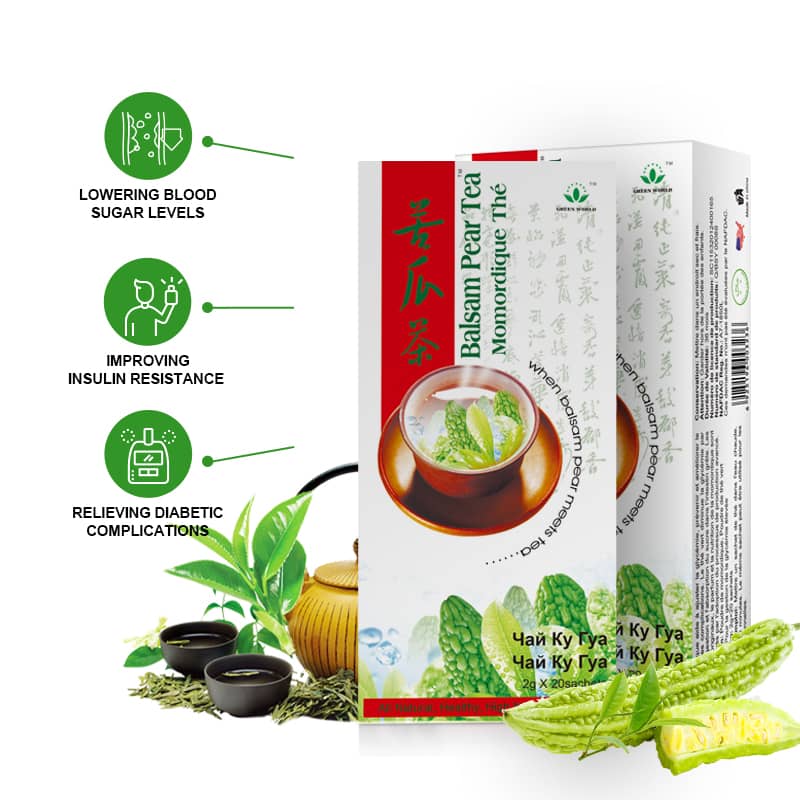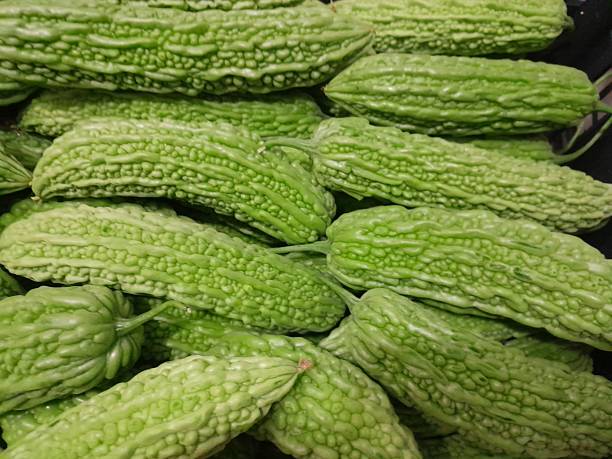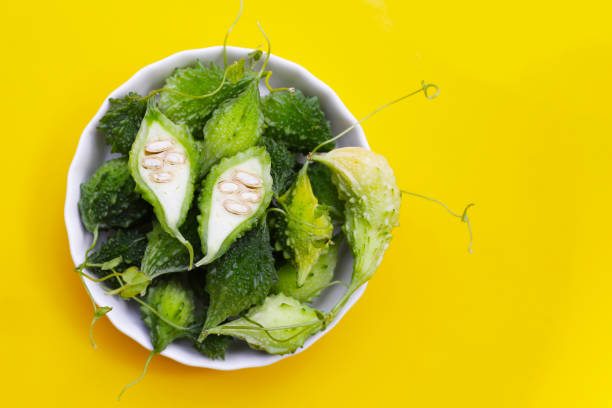Balsam Pear Tea and Type 2 Diabetes

Managing type 2 diabetes can feel like a daily battle. But what if nature had a weapon you hadn’t tried yet? Enter balsam pear tea—a traditional herbal drink made from the dried or fresh fruit of the bitter melon plant (Momordica charantia). Known by many names, including bitter gourd and karela, this unusual fruit has gained serious attention for its powerful blood sugar-lowering effects.
Let’s explore how balsam pear tea might become a natural ally in your diabetes management toolkit.
What is Balsam Pear?

Also called bitter melon, balsam pear is a vine-grown fruit that looks like a bumpy cucumber and tastes—you guessed it—bitter. While it’s a common ingredient in Asian and African kitchens, it’s also used in traditional medicine to treat diabetes, infections, and digestive issues.
Nutritional Profile of Balsam Pear
Key Nutrients and Compounds
Balsam pear is rich in:
- Vitamin C – for immunity
- Folate and Potassium – good for heart and cell function
- Fiber – helps digestion and fullness
- Plant Insulin (Polypeptide-p) – acts like real insulin
What Makes It Effective Against High Blood Sugar?
It’s packed with compounds like:
- Charantin – known to reduce blood glucose
- Vicine – believed to help with sugar control
- Polypeptide-p – mimics insulin function
These work together to lower blood sugar naturally, especially when consumed in the form of tea.
How Balsam Pear Tea Works for Type 2 Diabetes
Insulin-Like Compounds in Balsam Pear
Polypeptide-p is a plant-derived insulin mimic that helps move sugar from your blood into your cells, especially important for those with insulin resistance.
Blood Sugar Regulation Mechanism
Balsam pear may:
- Stimulate insulin secretion
- Improve cell sensitivity to insulin
- Reduce sugar absorption in the intestines
- Slow the release of sugar from the liver
Effect on Glucose Tolerance
Regular consumption has been shown to improve glucose tolerance, meaning your body manages sugar spikes better after meals.
Scientific Studies Supporting Balsam Pear for Diabetes
Animal Research
In rats and mice, bitter melon extracts have consistently shown:
- Lower fasting blood sugar
- Better insulin function
- Regeneration of pancreatic beta cells
Human Clinical Trials
Some studies report:
- A 10–20% drop in blood glucose levels
- Comparable effects to some oral hypoglycemic drugs
- Better control of post-meal sugar spikes
However, more large-scale trials are needed to confirm results.
Comparisons to Diabetes Medications
Balsam pear is not a replacement for insulin or medications, but it may enhance their effects and help reduce dependency over time when combined with a proper lifestyle.
Benefits of Balsam Pear Tea Beyond Diabetes

Antioxidant Effects
Its antioxidants fight free radicals, which can worsen diabetes and damage blood vessels.
Digestive Health
Bitter melon improves gut health and may reduce constipation or bloating.
Weight Management
Low in calories, high in fiber, and known to suppress appetite, balsam pear helps maintain a healthy weight—which is key in diabetes care.
How to Prepare Balsam Pear Tea
Fresh vs. Dried Balsam Pear
You can use:
- Fresh slices (bitter but potent)
- Dried pieces or powder (less bitter, easy to store)
Simple Step-by-Step Recipe
- Boil 2 cups of water.
- Add 1–2 tablespoons of dried balsam pear or a few fresh slices.
- Simmer for 5–10 minutes.
- Strain and let cool slightly.
- Optional: Add a drop of lemon juice or stevia (no sugar!).
Best Time to Drink It
For best results:
- Drink on an empty stomach in the morning
- Or 30 minutes before meals to reduce sugar spikes
Recommended Dosage and Frequency
How Much is Too Much?
Start with 1 cup per day and monitor your blood sugar. Some drink up to 2–3 cups daily, but more isn’t always better.
Safe Daily Intake
Stick to:
- 1–2 fresh fruits per day OR
- 2–3 grams of dried powder OR
- 500–1000 mg capsules (as directed)
Who Should and Shouldn’t Use Balsam Pear Tea
Precautions for Diabetic Patients
Because it lowers blood sugar, combining it with diabetes medication could lead to hypoglycemia (low blood sugar). Always check with your doctor before starting.
Contraindications and Side Effects
Avoid if:
- You’re pregnant or breastfeeding
- You have low blood sugar
- You’ve had recent surgery
Possible side effects:
- Nausea
- Diarrhea
- Stomach cramps
Combining Balsam Pear Tea with a Diabetic Lifestyle
Diet
Pair the tea with:
- Low-carb meals
- Leafy greens, whole grains, and lean protein
- Zero added sugar
Exercise
Even 30 minutes of daily walking boosts insulin sensitivity. Combine it with balsam pear tea for best results.
Monitoring Blood Sugar
Keep track of your levels before and after tea use to understand your body’s response. A journal helps.
Frequently Asked Questions (FAQs)
1. Can I replace my diabetes medication with balsam pear tea?
No. It can support your treatment, but always consult your healthcare provider before changing medication.
2. How long does it take to see results from drinking balsam pear tea?
Some notice lower blood sugar in days, but it may take weeks of consistent use for full effects.
3. Can children with type 2 diabetes take balsam pear tea?
It’s not recommended for children unless prescribed and monitored by a pediatrician.
4. Will the tea make me lose weight too?
Possibly! Bitter melon supports weight loss by reducing appetite and improving metabolism.
5. What’s the best form: tea, juice, or capsules?
Tea and juice are more natural, but capsules are convenient and standardized.
Conclusion

Balsam pear tea might not be the most delicious drink, but its benefits are too sweet to ignore, especially for those battling type 2 diabetes. From its insulin-mimicking effects to its antioxidant power, this ancient remedy is making a modern comeback. Just remember: it works best as part of a healthy lifestyle. Add it wisely, monitor your sugar levels, and you may find yourself one step closer to balanced blood sugar, naturally.
